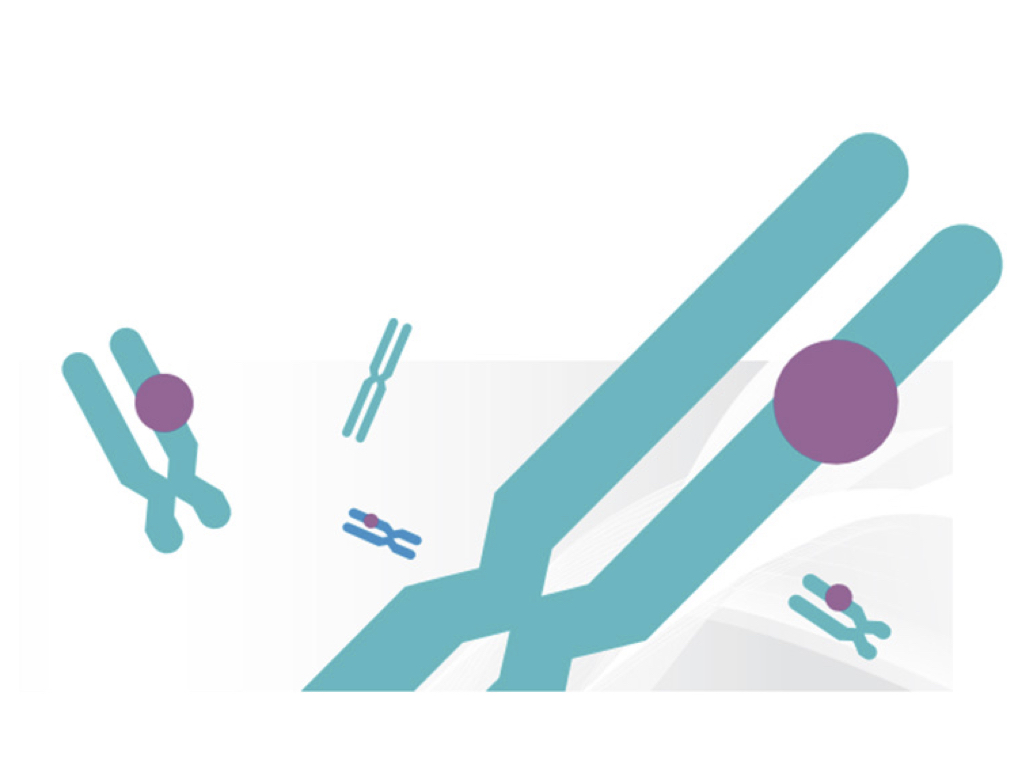Analysing and interpreting an Abnormal karyotype
An abnormal karyotype may show many things that are related to the health condition of a patient. A standard cytogenetic technique- karyotyping is performed to detect abnormalities associated with chromosomes.
An abnormal and normal karyotype looks exactly the same to a great extent at first glance, you can’t identify the abnormality until you have some expertise. Although an expert in karyotyping can identify the alteration, immediately and before preparing a karyotype, he or she will be sure about the result.
But for a newbie it might be a difficult task.
Talk of the topic: In the present article, I will show you some of the common abnormal karyotypes that you can understand. The results are our own lab reports. But before understanding that some common basics that are important to understand.
Two types of chromosomal abnormalities are common in humans; structural chromosomal abnormalities and numerical chromosomal abnormalities.
In the structural abnormalities the normal basic structure of chromosome changes. While in the numerical abnormalities the number of chromosomes changes.
Every organism has a different number of chromosomes, for instance, in us, we have 23 pairs of chromosomes. If any of the chromosomes get missing or inserting into the genome, it can cause some serious health issues.
The classic example of numerical chromosome abnormality is the trisomy 21 known as down syndrome. The karyotype of down syndrome is explained in our previous article, click the link and read it: A karyotype of Down Syndrome -Explained.
What does an abnormal karyotype show?
So let’s make it more interesting, I will give you a karyotype picture. You try to solve it and make an assumption of what should be the abnormality!
Before that see the normal karyotype given below. Now take a look at the image below,

Analyze the image, can you see something? No, the karyotype is of a normal male. See the last two chromosome, we have one X and one Y chromosome, The X is a metacentric and Y is normal acrocentric.
So in this karyotype neither structural nor numerical abnormalities are present.
Now let’s go ahead. and make it harder to some extent. Analyze the second image:
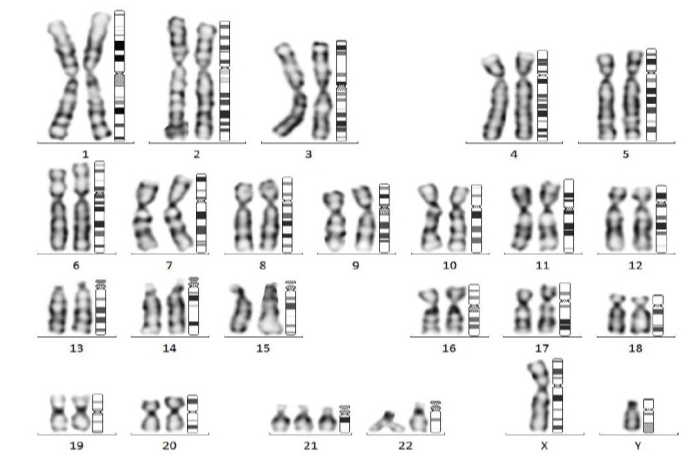
See it care fully, Can you see anything abnormal? No! count the chromosomes. It’s 47 and it’s a trisomy 21. See! it is not difficult but you need to develop an eye site to see it.
Let’s go ahead, See this image very carefully, given below.
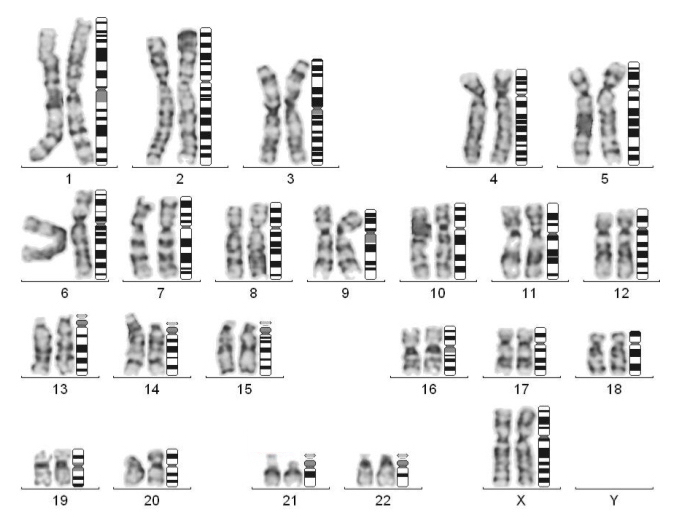
The karyotype is of a female, you can see it at first but it’s not normal there is some structural abnormality in it.
I am giving you some hint, see the chromosome pair 21. Now can you identify something? one of the chromosome 21 in a pair is larger which means some portion is inserted or duplicated. See the results below.
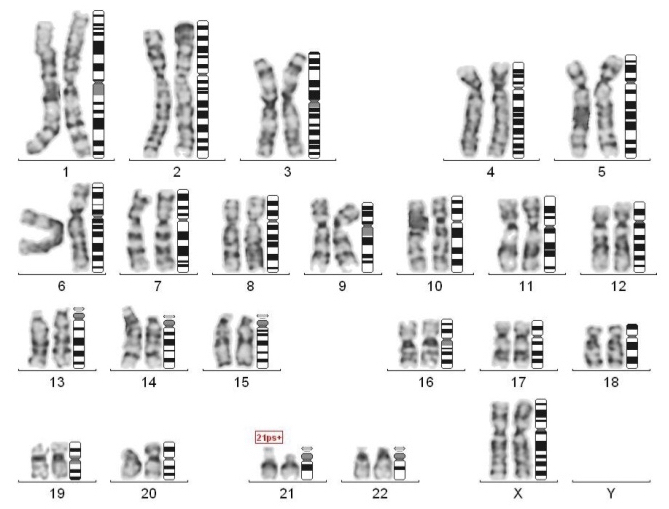
This condition is quite unfamiliar with most of you. Here the portion of chromosome 21 is increased and thus denoted as 21ps+, which means, that the short p arm of chromosome 21 is increased by itself or due to some unknown reasons. No translocations, inversion, or duplications are involved. The p arm of the chromosome randomly increased in size.
Let’s more ahead and see the next image.
Note: I have given results in every second image, so first analyze the karyotype, try to figure it our and then see the results.
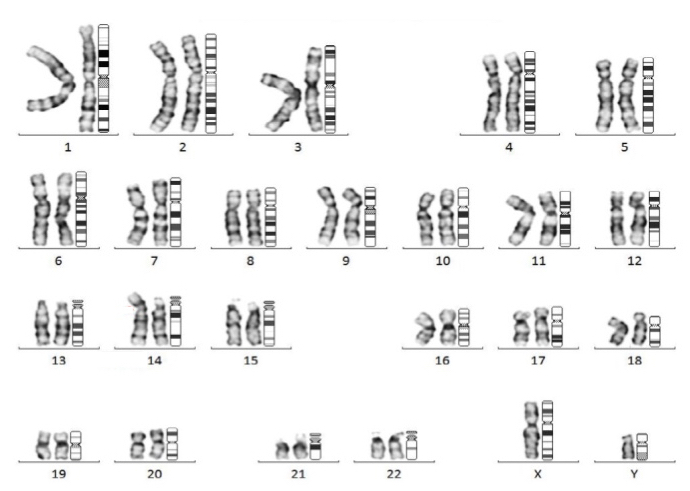
The karyotype is of female but at first glance, we can’t identify anything. See chromosome 14 and 21. Now can you identify what exactly is it? No! I know it is a bit difficult. Let’s see the answer.
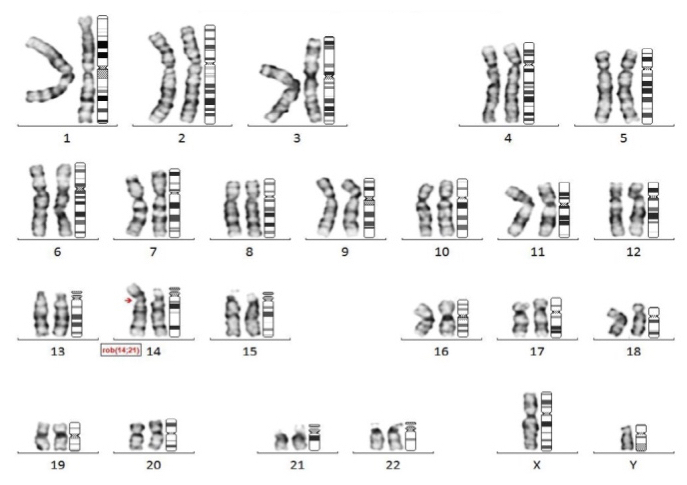
The above image is a type of translocation between chromosomes 14 and 21 and its a type of Robertsonian translocation. A female patient who was suffering from recurrent pregnancy loss.
See the next image,
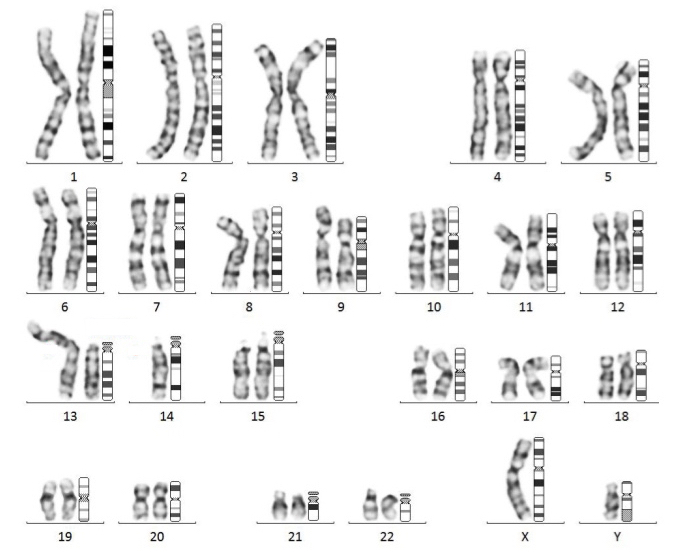
Now, this karyogram is interesting. it’s an easy one, you just have to examine it carefully. Take your time and investigate every chromosome pair. Can you identify something? See the results below,
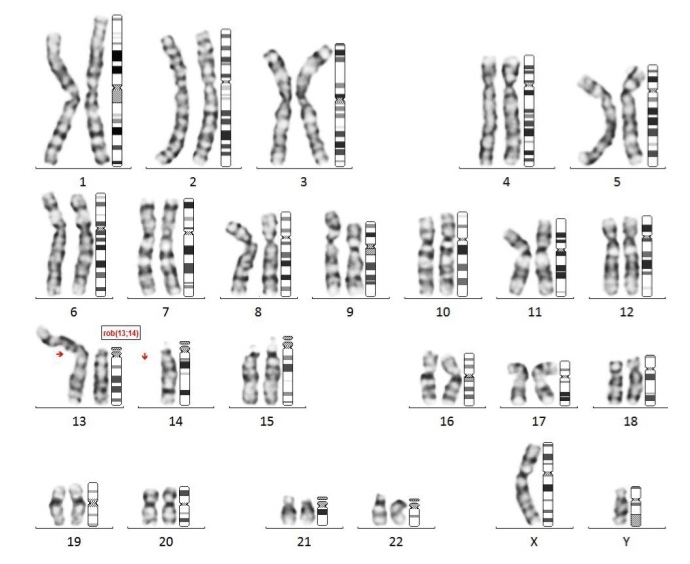
A long q arm of the large acrocentric chromosome 14 is translocated to the near chromosome 13. Again it is a type of Robertsonian translocation. The patient may have symptoms of intellectual and mental disabilities. The karyotype is of a male and may or may not have reproductive problems.
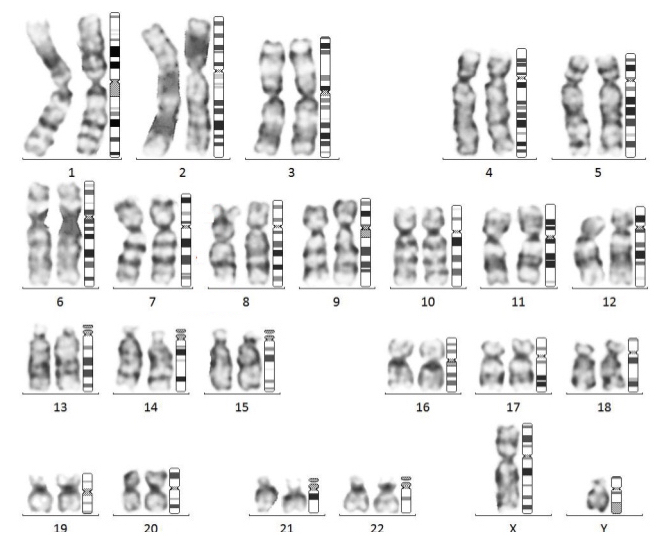
This one is hard enough to interpret by some novice. Expert eyesight is need to interpret the results. let’s see the results,
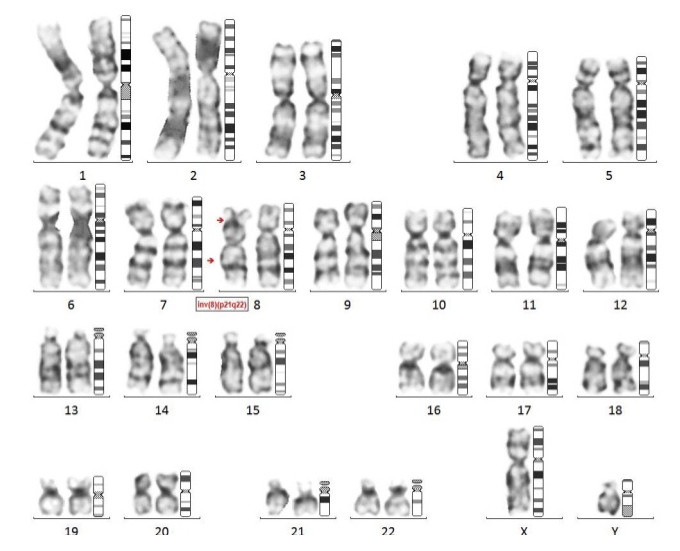
The karyotype is a inversion of chromosome 8 between p21 to q22.
Numerical chromosomal abnormalities are commonly encountered by conventional karyotyping but it’s difficult to investigate structural changes. In addition to this, identification of translocations are even harder.
To investigate translocations and inversions, FISH- fluorescence in situ hybridization like techniques are use, which are more accurate than the conventional karyotype.
| Term | Explanation |
| Inversion | A portion of chromosome separated from its arm inverted and attached back to its original position. |
| Translocation | A part of the chromosome is deleted and translocated to another chromosomal arm. |
| Robertsonian translocation | Two acrocentric chromosomes fuse together and form another chromosome. |
| Deletion | A part of a chromosome gets deleted. |
| Insertion | Some portion of the chromosome is inserted. |
Conclusion:
These are some of the common abnormal karyotypes we have reported in the past. however, we have some complicated abnormal karyotype as well but for that, you should first learn how to make a karyotype and interpret the results.
We have given you a rough idea of how you can identify different chromosomes and how you can group them. But to make yourself an expert buy our upcoming ebook in which we have shared our expertise, experience and all knowledge regarding karyotyping.
Our ebook can help you to be a cytogeneticist. Also, we have covered banding techniques using which you can prepare various karyotypes.
I hope this interesting article (which is the only of its kind on Google) may help you to investigate and observe abnormal karyotype.
